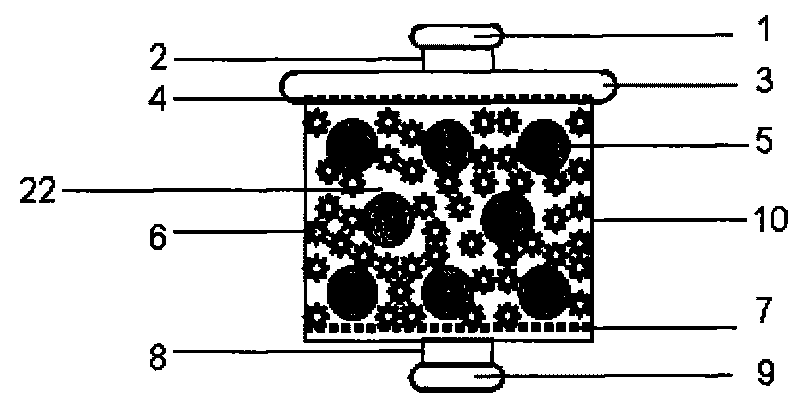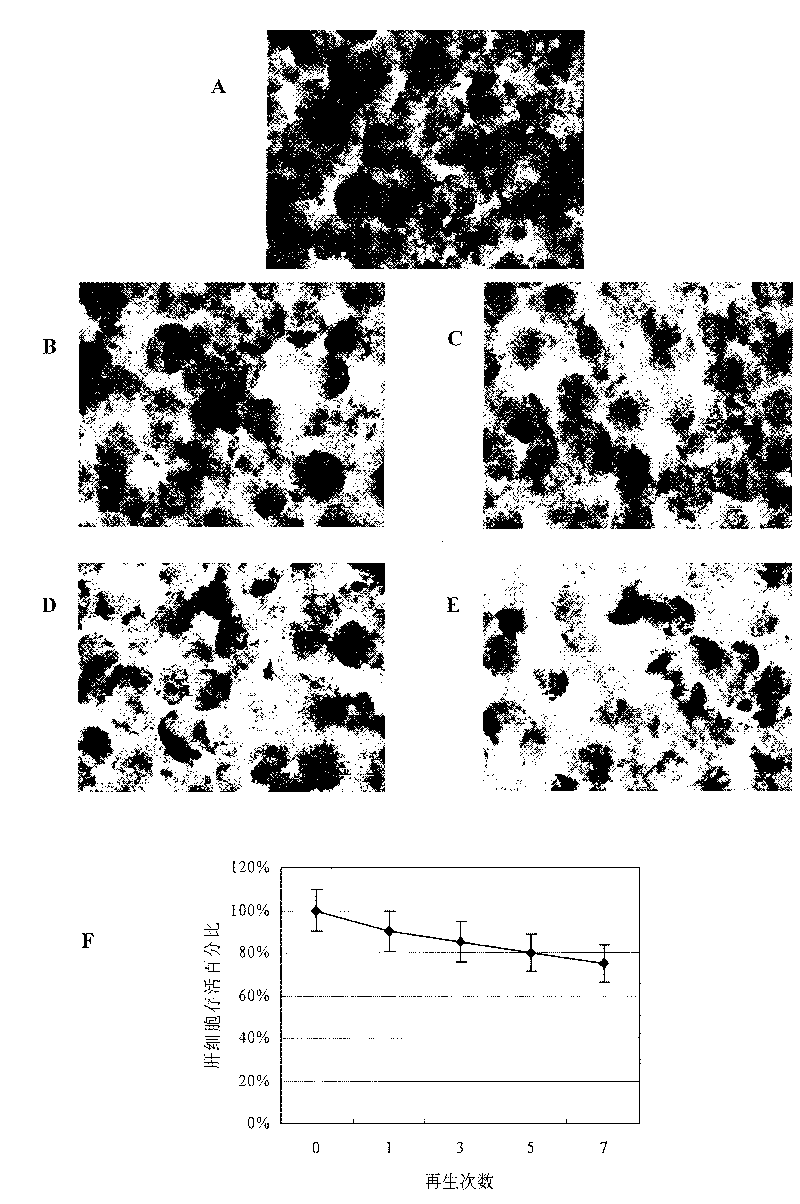Cell reactor and artificial liver support system comprising same
A cell reactor and cell technology, applied in the field of biomedicine, can solve the problems of difficult to observe the growth of liver cells, poor growth of liver cells, etc. Effect
- Summary
- Abstract
- Description
- Claims
- Application Information
AI Technical Summary
Problems solved by technology
Method used
Image
Examples
Embodiment 1
[0027]The composition of embodiment 1 cell reactor
[0028] 1. The composition of the cell reactor
[0029] Such as figure 1 As shown, the cell reactor of the present invention comprises a container 10, the bottom of the container 10 is provided with a liquid outlet 8, the top of the container is provided with a cover 3, the cover 3 is provided with a liquid inlet 2, the bottom of the container and the top of the container are sealed A layer of 100-400-mesh filter screen 7, 4 is arranged inside the cover, and the liquid outlet 8 and the inlet 2 are provided with a cover 9, 1 that is tightly matched with it, and the microcarrier with liver cells is accommodated between the two layers of filter screen inside the container. A mixture of 6 and resin 5.
[0030] The cell reactor of the present invention is loaded with a mixture of microcarriers with hepatocytes and resin, wherein the hepatocytes are animal or human primary hepatocytes, immortalized human or animal hepatic cell li...
Embodiment 2
[0032] The preparation method of embodiment 2 cell reactor
[0033] Take Cytopore 2 microcarriers (purchased from Pharmacia, USA), and pretreat before use according to the manufacturer's instructions. Cells suitable for bioartificial liver, such as immortalized human liver cell lines, are suspended in serum-free medium Keratinocyte-SFM (Invitrogen, USA), to which rEGF (final concentration 0.1ng / ml) and BPE (bovine pituitary extract )20~30μg / ml). According to the human hepatic cell line 5 × 10 7 The ratio of cells: 1g microcarrier: 500ml culture medium was mixed, cultured under shaking conditions, so that the cells were attached to the microcarrier. Change the medium every 2 days. The morphology and number of hepatocytes on the microcarriers were observed by Gimsa staining. When the cells on the microcarriers grow nearly confluent (80-100%), they are mixed with sterilized resin particles with a diameter of 800 μm (purchased from Zhuhai Livzon Medical Biomaterials Co., Ltd.)...
Embodiment 3
[0034] Embodiment 3: the regeneration method of cell reactor
[0035] When a treatment is completed, the cell reactor of the biological hepatic circulation part is removed, the bottom outlet is closed, and the serum-free cell culture medium is poured into the top inlet port, and the bottom outlet is opened after filling, so that the liquid flows from The bottom outlet flows out, repeat 3 to 5 times to fully remove the dialysate. Then, after the liquid has completely flowed out, the outlet end is closed with a cover, the cell culture medium is added to the cell reactor, the inlet end is covered with a cover, and the cover is unscrewed to allow air to pass through, and then placed in a cell incubator for cultivation; or After the dialysate is completely washed, the hepatocytes in the cell reactor are perfused with culture medium by a peristaltic pump. After regeneration and culture for 12-24 hours, a small amount of microcarriers were taken, and cell survival was observed by Gi...
PUM
| Property | Measurement | Unit |
|---|---|---|
| Diameter | aaaaa | aaaaa |
| Diameter | aaaaa | aaaaa |
Abstract
Description
Claims
Application Information
 Login to View More
Login to View More - R&D
- Intellectual Property
- Life Sciences
- Materials
- Tech Scout
- Unparalleled Data Quality
- Higher Quality Content
- 60% Fewer Hallucinations
Browse by: Latest US Patents, China's latest patents, Technical Efficacy Thesaurus, Application Domain, Technology Topic, Popular Technical Reports.
© 2025 PatSnap. All rights reserved.Legal|Privacy policy|Modern Slavery Act Transparency Statement|Sitemap|About US| Contact US: help@patsnap.com



